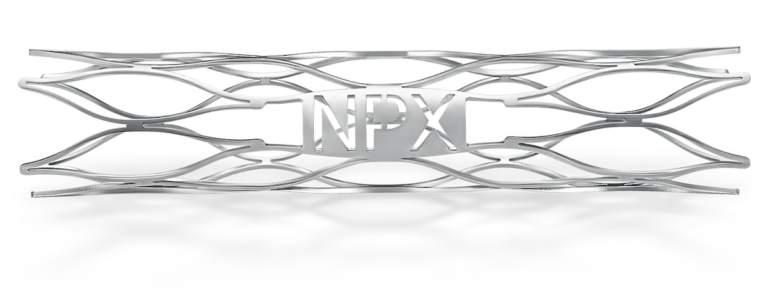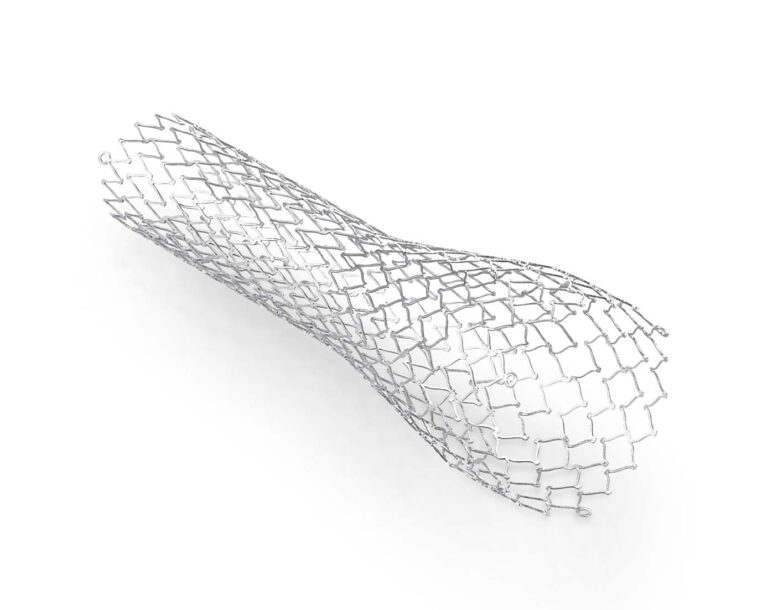Post-processing involves preparing the surface finish of a part to improve biocompatibility, extend fatigue life, and prevent corrosion.
Honing
This is the first step in cleaning the surface after laser cutting. Laser cutting produces slag or dross that needs to be scraped away.
Braiding
We offer hand braiding services for designs that can not be done with a braider. The most common design constraint with a braider is terminating the ends to a less traumatic end or provide features to connect to other components in an assembly.
Forming
We take a smaller as-cut part and form it into the desired geometry, generally expanding it out 3-5 times and even up to 10 times its diameter. We use a salt bath, which provides uniform heating and gives a consistent oxide layer which is easier to remove. We can form nitinol, stainless steel, and cobalt chrome.

Heat Setting
This process allows us to set an Af temperature for a nitinol part. In general, nitinol Components with Af temperatures closer to body temperature will be less rigid and have a longer fatigue life. We can dial in an Af temperature and the heat setting parameters to match the design needs and specifications the customers provide.
Grit Blasting
We blast high-pressure media onto the part to remove the oxide layer, to round the edges, and to remove any heat-affected zones after laser cutting. We have multiple types of media and sizes to achieve the desired effects.
Pickling and Etching
Pickling is a chemical process similar to etching, but which uses a less aggressive etchant. We use pickling as a stand-alone process, and we use etching as a pre-electropolish step. We have an in-house process that acts as a pickling-etching hybrid, where just the oxide layer is removed without attacking base metal. We call this process pre-etch. This process works well for customers that don’t need a full electropolish or when maintaining the geometry of a part while getting solid oxide removal is important.

Chemical Polishing
This provides a more cost-effective way of producing a relatively nice surface finish. The finish will not be as smooth and bright as electropolishing, but in applications where customers don’t need the extremely smooth rounded edges, it’s more economical.
Electropolishing
This process is key to obtaining corrosion cleanliness, and also helps with fatigue. It’s important in multiple specialties, such as cardiovascular and orthopedics. In order to gain regulatory approval through bodies such as the FDA, passing electric potential testing per ASTM F2129 is important. We’ve been able to polish many different devices in many sizes and have passed that test with high repeatability.
Electropolishing Braided Structures
We offer braiding capabilities with electropolish that creates a smoother surface with less fretting or rubbing of wires. In a long-term high-fatigue scenario, rough wires can act as a saw and cut into the wire. Our braiding technique ensures that the finish of the wires will provide a long-wearing product.

Passivating
In addition to electropolishing and etching, we offer a final passivating process step that removes any residual iron oxide layer making the part less susceptible to corrosion.
Laser Welding
We use a high energy spot from a laser beam to join neighboring components mechanically. This is very effective for joining components that need to terminate in a cap or end and for a joint that needs to be provided for connection to a delivery system. This works well for both stainless steel and titanium parts.
Cleaning
We remove processing residues and any foreign materials or chemical residues to give the part a pristine surface with no contaminants.


